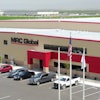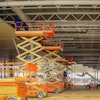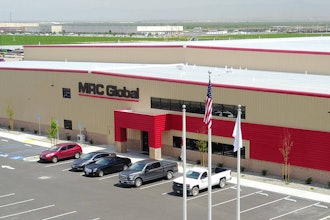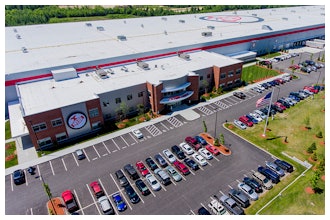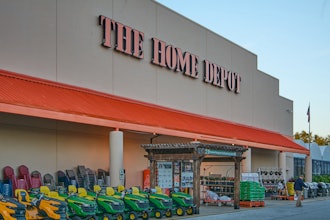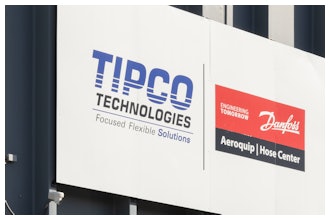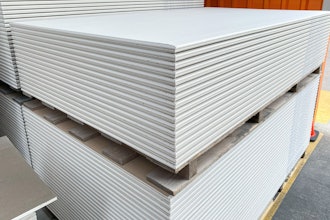
Although the origins of today’s tablets reach back as far as Konrad Zuse’s first freely programmable Z1 Computer, the device world has since branched off into very distinct directions based on user needs — consumer and industrial. The industry as a whole has certainly come a long way since the rack-mounted era, but industrial computing’s nuanced operational requirements have driven an evolutionary path quite different from its consumer counterparts — like the Apple iPad, Amazon Kindle or new Microsoft Surface.
Industrial and rugged computing devices are specifically designed to meet military, field service, public safety, utility, transportation, construction and other application needs. These, in turn, have directly influenced form factor and functionality. From advancements in solid-state drives to thermal management, this article will provide an overview of significant technology milestones, as well as some of the exciting areas in terms of where the rugged tablet industry is headed next.
What Is Rugged?
To begin, we must first take a step back to discuss the term “rugged.” Defining this category has been complicated in the commercial world because it has historically been difficult for the industry to agree upon a consistent universal specification. Calling a product rugged used to be analogous to saying a product is “good.” What does that mean? The need for ruggedness as a concept is based on the user’s applied need, and while there are similarities, there are also differences in many axis like temperature, drop, and vibration requirements.
Further complicating and leading to the muddying of the term “rugged” is market competitiveness as various vendors desire to supply customers with a “rugged” or “semi-rugged” product at minimal cost over their commercial grade solutions.
To help establish common measurement criteria, the market has outlined some standards to refine the scope of ruggedness. The main standard was brought forth by the International Electrotechnical Commission (IEC), which developed its Ingress Protection (IP) rating system that specifies degree of protection against solid objects and liquids — such as dust and water. The National Electrical Manufacturers Association (NEMA) also publishes similar ratings and addresses other features not covered by IP rating including corrosion, aging, etc.
The military also has its own set of specifications covered in MIL-SPEC-810G for products to be used by the U.S. Department of Defense. However, in practice, many military systems are granted “waivers” to some parts of the full MIL-SPEC based on mission expectations, which means even the use of the words “MIL-SPEC” in practice introduces its own confusion.
The Rugged Tablet Transformation
Different industries have varying computing equipment requirements. For the military, smaller and lighter is almost always better, so long as it’s balanced with durability. A manufacturing facility, on the other hand, may need to protect against circulating dust or particles that could quickly clog an open system laptop. Following are some of the most significant developments that have changed how rugged tablets adapt and meet the needs of industrial user in such scenarios:
- Solid-state drives: Magnetic storage media such as floppy drives and hard disk drives (HDDs) have been the most common form of computer data storage since the 1960s. These traditional storage drives are generally highly sensitive to vibration and shock, rendering data potentially unreadable in many industrial environments. More recently, solid state drives (SSDs) have emerged as a viable alternative that can deliver better performance and reduce power usage – particularly in military, aerospace, public safety, and utility environments.
- Embedded operating systems: Rugged computing devices are typically needed to run very specialized applications. For that reason, the introduction of embedded operating systems has been instrumental in delivering a Windows-like experience, but with more efficient utilization of the central processor unit (CPU). This allows for a slimmed down device that requires less memory, power, and size than the equivalent desktop operating system would need for the same tasks.
- The Toughbook crossroads: The Panasonic Toughbook CF-74 is arguably one of the first successful mainstream rugged laptops. Launched in 2006, the CF-74 model had the right specs and at the right price point to lead a market revolution toward devices that serve less hospitable environments. The Toughbook had sealed ports and was drop resistant, meaning the laptop could now leave the comfort of the office and operate in conditions with moisture, vibration, and grime. The Toughbook CF-74 also spurred fierce competition in this space for the first time with other manufacturers such as Dell and Getac.
- Thermal management and materials: One of the looming concerns in the rugged area is the thermal management and how to prevent overheating, especially in devices that must remain sealed to protect from outside particles. One relatively new concept that has emerged over the last 5 years is using heat pipes. A heat pipe system leverages change in liquid and gas states to shed energy and excess heat. Additionally, new materials such as composites, plastics and carbon fiber have vastly improved shock absorption and heat transfer capabilities.
- Screen technology: Screens in an industrial environment take a lot of abuse, so scratch-resistant and durable materials are essential. In the 1960s, Corning was at the forefront of developing durable materials like Gorilla Glass, but it was never put into production until it was adapted for the first iPhone in 2007. Since then, Corning launched Lotus Glass, designed for OLED and LCD displays, and a thinner Gorilla Glass 2 in early 2012. At the same time, LCD screens have become considerably less expensive, making high-quality screens more affordable to integrate during production.
The Future of Rugged Computing Devices
Along with a look back, there is a lot of excitement about developments that will change rugged devices in the future. Thinking 10 years ahead, the future of rugged computing could advance in several directions.
- Device interaction will become more predictive. Devices will interact more at the human level than the keyboard level. There will be more embedded technology that will be able to better understand your universe and even predict next actions and allocate computing power predictively. Already, some phones for example react to spoken voice (like SIRI) or use things like facial processing algorithms to react to their users.
- Device sizes will normalize.If you look at the larger screen of the iPhone 5, the previous trend of generally smaller is not necessarily the future, especially in the rugged environment. GUIs and control screens used for monitoring, testing, seeing data need to be presented in a size where it can be easily viewed and manipulated. If they are too small, what’s to gain?
- Better power sources will finally emerge.New battery technology will open the door to the next generation of devices. Today, devices are highly dependent on batteries for application and talk time, which today leaves much to be desired. The future of wireless power will enable devices to tap the airways for extended life. This development would truly revolutionize what we can do with our devices, where we take them, and for how long.
For more information, please email Callahan at [email protected].

